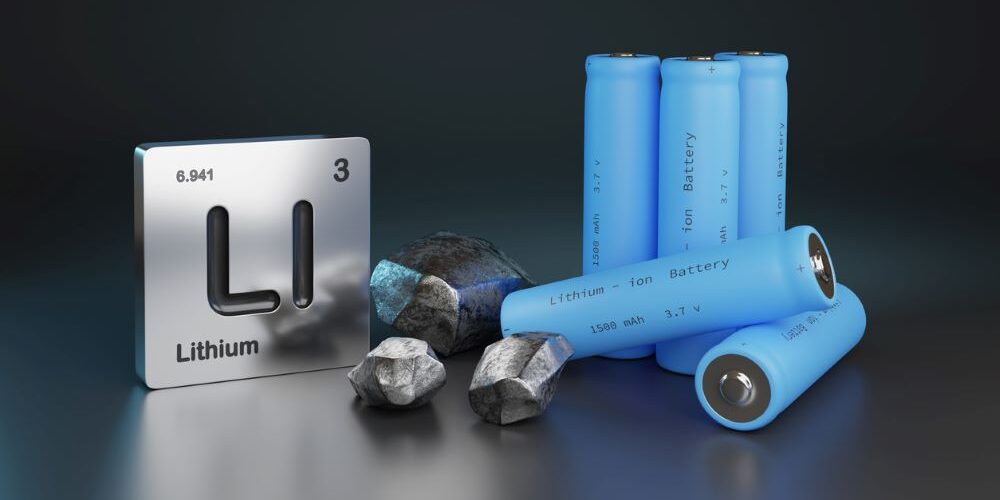
Medical Devices Powered by Lithium-ion Batteries: Safety Considerations
We are pleased to share insights from Berkley Life Sciences, a member of the W. R. Berkley Corporation insurance companies.
The development of lithium-ion batteries, also known as “Li-ion” batteries, has brought game-changing portable, rechargeable power to a vast array of products, including modern-day smartphones and electric cars. The life science industry has taken notice: many medical devices, ranging from electric wheelchairs to defibrillators to oxygen concentrators, have been designed to work with lithium-ion batteries. While the efficiency and longevity of such batteries can be extremely beneficial and, in some cases, lifesaving, their use comes with safety trade-offs over traditional batteries. Medical device manufacturers must consider these trade-offs carefully when electing lithium-ion batteries as the power source for their products.
What is a Li-ion Battery?
A Li-ion battery is designed with an anode, cathode, separator, electrolyte, and two current collectors (positive and negative). The electrolyte carries positively charged lithium ions from the anode to the cathode and vice versa through the separator. This movement of ions creates a charge (current) that then flows from the positive current collector through a device being powered and back to the negative current collector. What makes Li-ion batteries so prevalent in product design versus traditional rechargeable batteries is their higher specific energy and associated efficiency, greater energy density, and longer usable life. In simple terms, Li-ion batteries hold a greater amount of energy relative to their size, are often lighter in weight, and last considerably longer.
Why are there safety concerns with Li-Ion batteries?
Overall, Li-ion batteries have a low failure rate, but due to the high energy generated by the battery system, when a failure occurs, it can be catastrophic. A Li-ion battery system contains all the necessary ingredients for a fire: combustible components, high energy, heat generation, and exposure to oxygen. While this is a reason for caution, Li-ion batteries pose an additional risk: if they fail, they can go into a state called “thermal runaway.”
Thermal runaway occurs when the battery develops more heat than can be released by the unit, often resulting in a fire or even an explosion. Compounding the hazards posed by thermal runaway is chemical decomposition, which allows the battery system to generate its own oxygen when combusting. This, in effect, can allow combustion events to burn with extreme rates of propagation, similar to what you would encounter with a fuel/oxygen-cutting torch. In most cases, batteries simply ignite. But in less common cases, flammable gases escape the battery until they reach an external ignition source, which can result in an explosion.
What is the cause of thermal runaway in Li-ion batteries? Usually, thermal runaway results from one or more of the following: defects in battery design; poor manufacturing quality that results in short circuits; battery damage resulting from improper transportation or daily use; or exposure to external heat sources, including improper charging such as where the battery is placed on a cushion or blanket that will block heat release. Fires involving Li-ion batteries are challenging to control due to the extreme energy released during the event.
Li-Ion Batteries and Medical Devices.
The medical industry is not immune to the hazards of Li-ion batteries. A failing battery that goes into a thermal runaway can injure a patient or caregiver due to exposure to heat, flames, explosions, or toxic gases. As early as 2016, the FDA began to warn the public of hazards that Li-Ion batteries present and specifically focused on the risk to portable medical carts, such as crash carts in hospitals. In 2022, a Li-ion battery powering a wheelchair in Ann Arbor, Michigan, went into a thermal runaway, injuring two elderly occupants of a senior living apartment unit. In 2023, the FDA issued a warning that a specific home-use glucose monitoring device was causing a pattern of Li-ion fires. The warning referenced eighty-eight incidents, including at least seven reports of fires and one injury; the incidents led to a Class I Recall, necessitating an updated warning for the device.
In addition to concerns about fire from batteries in the home or healthcare environment, medical device companies also need to address battery hazards in their distribution facilities and during transportation. For example, if a battery is defective or damaged and stored in a distribution warehouse and thermal runaway occurs, this could ignite a broader fire that can result in a catastrophic loss of inventory.
Li-ion Battery Considerations in Medical Devices
Commercializing safe Li-ion batteries containing medical devices starts with the device design. The FDA has developed a consensus standard specific to the safe design of medical products using Li-ion batteries. This starts with ANSI/AAMI ES 60601-1, which outlines the general requirements for the safety and performance of medical devices that require battery power. Medical devices designed to utilize a Li-ion battery should also conform to several International Electrotechnical Commission (“IEC”) standards, including 62133, 60086 Part 4, and UL 1642 Lithium Batteries. The combined requirements set forth in the standards referenced by the FDA create foundational requirements for the design, testing, and safety of medical devices that medical device manufacturers will need to adhere to when submitting to the agency for review and approval.
Beyond these requirements, device manufacturers can take steps to further minimize risk. Devices should be designed so only approved replacement batteries and an approved charger can be readily used. One common link to Li-ion thermal events is that users replace approved batteries with unapproved ones or use unapproved chargers, often purchased online from unvalidated suppliers. Designing the device to minimize the risk of tampering or unapproved battery replacement, along with providing device service or replacement batteries, could help minimize risk. Just as important is the incorporation of strong language in Instructions for Use (IFU) and other device literature outlining approved storage, charging, use, and maintenance requirements. Appropriate device packaging to protect the product in transit is also an important safety feature to minimize fire hazards.
Warehouse and Storage Considerations
When storing bulk Li-ion batteries staged for production or finished products staged for distribution, medical device manufacturers should focus on ensuring that warehouse operations have a strong policy focused on minimizing thermal events. This starts with inspecting incoming cargo and separating any obviously repackaged batteries or boxes that have been damaged. Batteries that are inspected and found to be releasing heat or have a charge in excess of what is approved by the supplier should not be placed into storage and must be removed from the building. As a general practice, Li-ion batteries should never be stored fully charged. Units that might be damaged during warehouse operations, such as those that fell from a rack or were struck by a fork truck, should be assumed to be compromised and returned to the supplier for inspection and certification.
In addition, warehouse storage should conform to supplier requirements. In general, solid pile storage of multiple pallet loads is not considered a best practice, as the weight and constriction of the loads can result in damage and the inability to release heat. A safer practice is to store the pallet loads in racks protected by properly designed and installed automatic sprinkler and fire alarm systems.
Medical Device Safety
As noted above, there have been instances of Li-ion batteries in medical devices entering thermal runaway, resulting in bodily injury and damage to property and infrastructure. As life science companies develop and commercialize increasingly sophisticated medical devices designed to be powered by Li-ion batteries, it is critical that they take all necessary precautions to minimize the risk of accidents. This requires adopting resilient design standards, educating users as to the potential risks, and adhering to national and global development and warehouse standards.
The use of Li-ion batteries in medical devices such as glucose monitors has unquestionably contributed to the development of high-quality lifesaving and life-enhancing medical products more accessible to the general public; however, medical device manufacturers must remain vigilant in adhering to stringent safety protocols.
Authored by Christopher Dorko, Berkley Life Sciences, VP, Chief RMR Officer
Related Articles
Medical Malpractice Claims Examples
Risky Ev Business: The Dangers of Lithium Batteries
Technical Insights of Artificial Intelligence in Insurance
Important Notice
Berkley Insurance Company (limited company incorporated in Delaware, USA) ABN 53 126 559 706 t/as Berkley Insurance Australia is an APRA authorised general insurer. Information provided is general only, intended for brokers and has been prepared without taking into account any person’s particular objectives, financial situation or needs. Insurance cover is subject to terms, conditions, limits, and exclusions. Underwriting criteria applies. When making a decision to buy or continue to hold a financial product, you should review the relevant Policy Wording.
Share this post on
Inside Berkley Insurance Australia: An Interview with CEO Tony Wheatley
Berkley Insurance Australia Wins Specialist Insurer of the Year for Fourth Consecutive Year
Getting the Best Terms for Clients with Prior Claims


